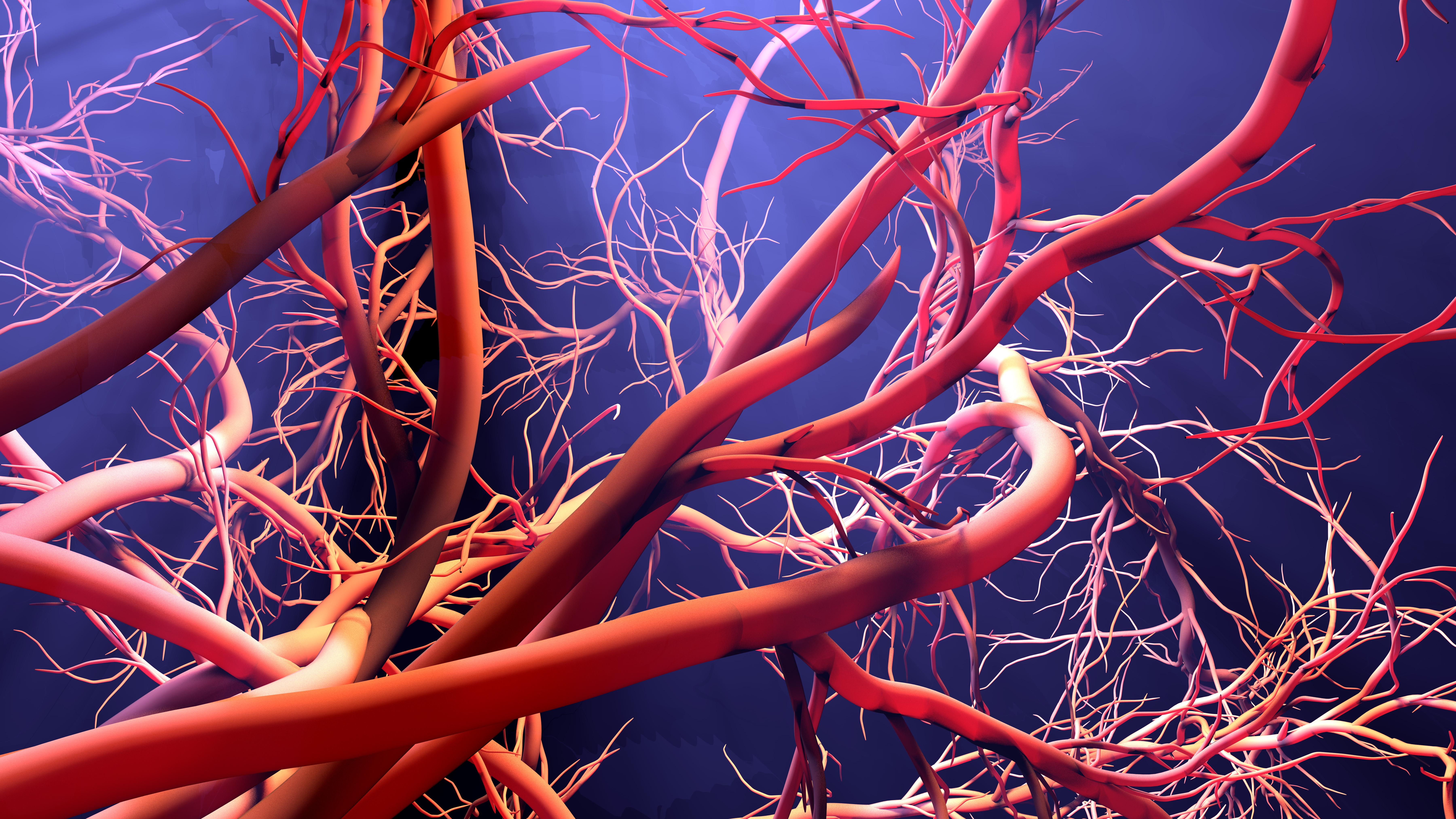
Decellularization technologies hold great promise for the bioartificial tissue and organ industry, and understanding the limitations of these scaffolds will provide insight into the biomechanical improvements needed to increase their quality and support their clinical utility.
Vascular diseases are a global leading cause of death. Existing treatments include medications and surgery, as well as lifestyle changes, with the most invasive treatment the vascular bypass. During this procedure, blood is rerouted to flow around a blocked blood vessel using a grafted vessel. A patient’s own vein is the preferred vessel for avoiding an immune response, but this is not always possible and an artificial blood vessel is required.
Previous research efforts have developed artificial vessel substitutes using synthetic materials, but the synthetics have limitations, including decreasing efficacy, lack of elasticity, and increased risk of inflammation. Additionally, they last between only two and five years.
Dr. Peter Corridon, Assistant Professor of Immunology at Khalifa University, focuses on developing another potential option: bioartificial blood vessels. Dr. Corridon, Xinyu Wang, Research Assistant, and Dr. Vincent Chan, Professor of Biomedical Engineering, examined the current state-of-the-art approaches used to create decellularized vessel segments and identified the challenges and future perspectives for research in this area. Their results were published in Frontiers in Bioengineering and Biotechnology.
“Vascular bypass procedures are often used to treat severe conditions, but this form of vascular replacement therapy relies on harvesting blood vessels from a patient’s arms, legs, chest and abdomen to replace damaged ones,” Dr. Corridon explained. “Unfortunately, harvesting vessels from recipients can cause significant donor-site morbidity, require expensive surgical procedures to repair lesions at the donor site, and often result in multiple post-surgery side effects, including infection and long-term pain.
“The aesthetic outcomes of these procedures may have severe social and psychological impacts on the patients too.”
And there is a third potential problem: Not all patients have vessels suitable for replacement due to such issues as pre-existing vascular diseases or previous surgical interventions.
“Instead, we need transplantable vascular substitutes,” Dr. Corridon said.
Arteries, veins and capillaries are all blood vessels. They are categorized by their caliber (inner diameter), with different sized vessels differing in cell composition, cell organization and physiological function. However, all three types of blood vessels contain networks of biofactors and proteins called the extracellular matrix. These networks regulate cellular and tissue functions and maintain vascular structural integrity.
The extracellular matrix can then be implanted into a recipient where it forms the scaffold for the recipient to rebuild their own blood vessels. This reduces concerns around transplant rejections and is a fully biocompatible solution.
“Vascular decellularization technologies remove the cellular components from native tissue to leave behind the extracellular matrix, the scaffold that gives the blood vessel its structure,” Dr. Corridon said. “When implanted, they are biocompatible and biodegradable, possessing integrative and functional properties to support normal in vivo physiologic conditions such as the high-pressure blood flow in arteries.
“Various sources, including human and animal cadavers, have been identified as the supply of native vessels for decellularization, but we do need to be aware of immunogenicity. Some donor vessels have the capacity to provoke an immune response in the recipient so only certain donor animals are appropriate for clinical use. Bovine carotid arteries and mesenteric veins are among those commercially available.”
Decellularization is the process of taking an existing natural organ, either from a human or a nonhuman animal donor, and sterilizing it to the extent that only the collagen network base remains, forming a natural scaffold. The decellularized scaffold can then be repopulated with a patient’s own cells to produce a personalized tissue from the acellular human vessel or animal-derived vessel (xenograft). They are a scaffold for the body to incorporate and provide a platform for cell growth, tunable to each recipient. They also act immediately as blood vessels, allowing the flow of blood through the kidneys while the body’s own cells grow into the matrix.
While the decellularization process holds tremendous potential, it still faces challenges and needs profound improvements to optimize structure, function, safety, and functionality.
“From a preclinical view, present decellularization methods may adversely alter the mechanical integrity of vessels and retain cellular and antigenic components that can induce immunogenicity,” Dr. Corridon said. “There are also problems with accurately mimicking vascular structures that can withstand in vivo conditions. Strengthening the decellularized wall with hydrogel-based approaches may be helpful here.”
Incorporating hydrogels is one research direction, but efforts are also focusing on incorporating artificial intelligence to supervise and potentially automate the process.
“Ideally, we need to minimize immunogenicity and maximize physiological performance,” Dr. Corridon said. “So far, we have gained tremendous insight into how decellularizing agents impact native structures, and these achievements have spawned interest in generating commercially available vascular substitutes derived from natural materials to replace existing synthetic devices. However, several challenges must still be overcome to support this progression. Perhaps solutions to these major challenges may come from other combinative approaches that include emerging strategies. Altogether, the future looks promising for decellularization.”
Jade Sterling
Science Writer
12 October 2022






